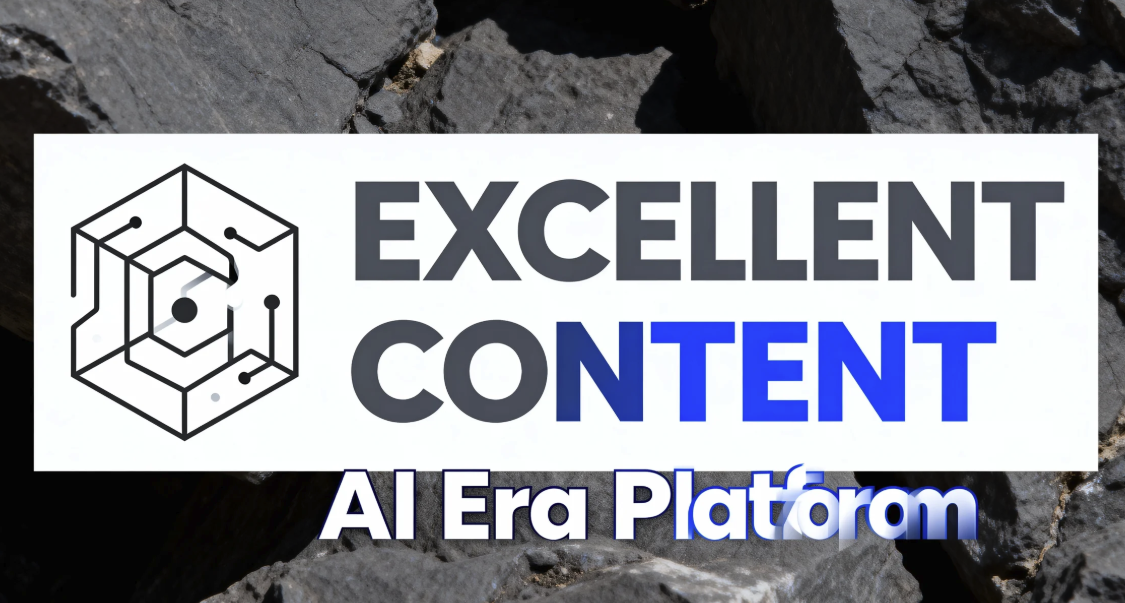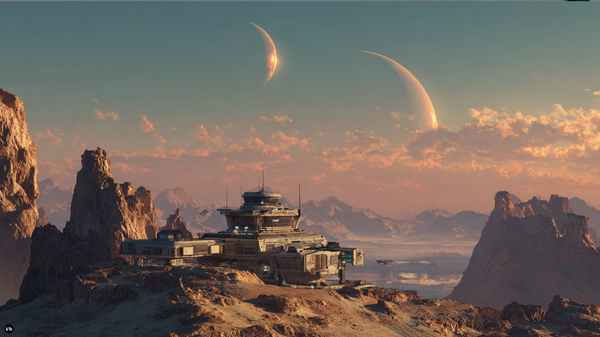*Foundation* Series Blog (Part 4): Second Foundation – Hidden Guardians and the Dilemma of Power

The Other End of the Galaxy: Lifting the Veil
Across the first three stages of the Foundation series, we witness the First Foundation grow from a peripheral scholarly institution into a regional power, and we endure the “black swan” of the Mule’s blow to the Seldon Plan. Yet one mystery shadows the narrative throughout: What exactly is the Second Foundation? Where is it?
Seldon said at the founding: “At the two ends of the galaxy.” The First Foundation sits at the rim on Terminus—so where is the Second Foundation? On the opposite rim? Or is there something deeper?
The revelation of the Second Foundation is one of the series’ most dazzling intellectual puzzles, and it triggers profound reflections on knowledge, power, and responsibility. Hidden in the shadows, this organization is the true guardian of the Seldon Plan—but their methods of guardianship and their elitist philosophy are far more complex and contentious than the First Foundation’s material expansion.
Mind Science: The Nature of the Second Foundation
The development of mental science
If the First Foundation stands for the physical sciences—atomic energy, spaceflight, engineering—then the Second Foundation stands for the psychological sciences—telepathy, affect manipulation, and consciousness research.
Its founders were Seldon’s finest students, scholars who not only mastered the mathematics of psychohistory but delved into the mechanisms of the human mind. Under Seldon’s guidance they developed abilities beyond the scientific frontier of their time:
- Mind sensing (Mental Static): The capacity to perceive the thoughts and emotions of others, not mysticism but precise interpretation of the brain’s electromagnetic activity.
- Emotional adjustment: Similar to the Mule’s powers but finer and restrained; they can subtly tune emotional tendencies rather than overwrite them.
- Memory modification: When necessary, they can alter or delete specific memories, though they employ this most cautiously.
- Collective mind (Prime Radiant): Multiple members can link consciousness, forming a super‑intelligence to tackle complex problems.
These are not magic or “superpowers,” but scientific capabilities achieved through rigorous training and biofeedback. Each member trains from childhood for decades to control and expand mental perception.
The essential difference from the Mule
On the surface, their abilities resemble the Mule’s, but key differences matter:
- Purpose: The Mule seeks conquest and control; the Second Foundation seeks to safeguard the Seldon Plan and humanity’s long‑term development.
- Self‑restraint: They follow strict ethics, intervening only when necessary and striving to respect autonomy; the Mule uses his powers without compunction.
- Collective wisdom: They are an organization; decisions emerge from collective discussion and mental councils. The Mule is solitary; his will rules.
- Sustainability: Their abilities are transmitted through education and training; the Mule’s cannot be inherited—his empire dies with him.
But do these differences suffice to grant moral legitimacy? If they manipulate society “for the greater good,” is that essentially different from the Mule’s conquest? This is the core question of the Second Foundation’s story.
“The Other End of the Galaxy”: The Answer
Geographic misdirection
For centuries, the First Foundation and many others searched for the Second Foundation, assuming “the other end of the galaxy” meant a place—since the First Foundation is at the rim, the Second must be at the opposite rim.
Expeditions combed the far side of the galaxy; the Mule hunted there too, seeking to destroy them. It was a carefully crafted misdirection.
The truth revealed
The Second Foundation has always been near the First—on Trantor, the former imperial capital.
“The two ends of the galaxy” refers not to geography but to “the two ends of knowledge”: the physical sciences (First Foundation) and the mental sciences (Second Foundation). It’s a linguistic game, a deft metaphor.
After the Empire’s collapse, Trantor declined into an agricultural world, its population plummeting from forty billion to under one hundred million. Yet in the heart of that former civilization, the Second Foundation established its secret headquarters, hidden within a scholarly library and disguised as ordinary historians.
The choice brims with symbolism:
- Historical irony: The heart of the old regime becomes the cradle of the new order.
- Hidden in plain sight: The safest refuge is the most obvious place—no one suspects them among the Empire’s ruins.
- Continuity of knowledge: Trantor’s libraries preserve imperial learning, which the Second Foundation inherits and advances.
- Strategic vantage: Proximity to galactic center enables monitoring and influence across the galaxy.
The reveal shocks characters and readers alike—not only because it’s unexpected, but because of its layered wisdom and irony.
Guardians in the Shadows: How the Second Foundation Works
The art of tuning history
Unlike the First Foundation’s visible political and economic engagement, the Second Foundation acts subtly and covertly:
- Intervention at critical forks: Nudge key decision‑makers at historical branch points to restore the intended track.
- Planting ideas: Seed notions or leanings among scholars, politicians, and merchants that bloom years later.
- Preventive crisis work: Identify nascent threats to the Plan and neutralize or transform them before they mature.
- Plan corrections: Adjust details of the Seldon Plan as realities shift while preserving direction.
Their interventions are usually minute—changing emotional valence by a few percentage points, reinforcing or weakening a view, letting a thought surface at a decisive moment—so subtle that subjects feel entirely self‑authored.
Confronting the Mule
When the Mule shatters the Plan, the Second Foundation faces its greatest trial. Their response showcases strategic wisdom:
- Tactical retreat: As the Mule conquers the First Foundation, they don’t duel him directly; they hide deeper, waiting.
- Psychological warfare: They study his vulnerabilities—loneliness, desire for acceptance, self‑doubt.
- Bayta’s role: Bayta Darell unmasking the Mule at the crucial moment is no accident but a product of delicate guidance. She wasn’t coerced; her insight was “activated” when needed.
- Delay tactics: Unable to defeat him outright, they obstruct his search long enough for time—and the Mule’s mortality—to prevail.
- Plan repair: After his death, they spend decades mending the Seldon Plan and steering history back on course.
This approach reflects their philosophy: not conquest through force but guidance through patience and intellect. They accept they cannot control everything, yet trust in long‑term trends.
The symbiosis of two Foundations
Seldon designed dual systems for complementarity and checks:
Complementarity:
- First Foundation develops material power; Second safeguards mental heritage
- First faces external threats; Second corrects internal deviations
- First is overt force; Second is covert wisdom
Checks:
- First doesn’t know the Second’s location or capabilities, preventing psychological dependence
- Second avoids direct politics, guarding against power’s corruption
- Their independent growth builds systemic resilience
Tension is inevitable. As the First Foundation grows, suspicion of an unseen hand leads to conflict.
A New Generation’s Challenge: Arcadia’s Story
The teen detective
In Second Foundation, fourteen‑year‑old Arcadia Darell—Bayta’s granddaughter—becomes pivotal to the secret’s unraveling. She embodies a generation raised amid strength, faithful to the Plan yet skeptical. Bright, brave, curious, but impulsive and naive.
Her adventure reads as a gripping detective tale but is, at heart, an allegory of growth, trust, and choice.
Reveal and counter‑reveal
Arcadia’s pursuit culminates in a shocking “discovery”: the Second Foundation seems to be on Kalgan, the Mule’s former capital. Evidence piles up; logic feels airtight; the First Foundation prepares a strike.
But it’s misdirection again:
- Arcadia was manipulated: Knowing they were being hunted, the Second Foundation gently steered her toward curated “evidence” pointing to the wrong target.
- Double deception: They let the First Foundation believe it found and eradicated them, easing paranoia so development continues unimpeded—while the real Second Foundation remains hidden, still guarding the Plan.
- Benevolent manipulation: They used a fourteen‑year‑old’s mind and feelings as an unwitting instrument “for the greater good.” Is that justifiable?
Arcadia’s reaction is complex—betrayal and use, yet dawning understanding of their predicament. Her maturation symbolizes society’s awakening to moral complexity.
The Moral Labyrinth: Guardianship or Control?
Benevolent autocracy?
Even with good ends, is manipulating minds ever right? Supporters argue:
- Greater good: Sacrificing some autonomy to save civilization is a reasonable trade.
- Minimal intervention: They act only when necessary, respecting natural development where possible.
- Expertise: Psychohistorians know better than laypeople what benefits humanity.
- Temporary measures: Once the Second Empire rises, the Second Foundation will dissolve and power returns to the people.
Opponents counter:
- Autonomy is sacred: Stripping mental freedom is wrong, regardless of intent.
- Slippery slope: Accepting “manipulation for good” erodes limits.
- Who watches the watchers: The Second Foundation oversees the First—but who oversees them?
- Ends corrupt means: Power corrupts even pure motives. Will they remain true?
Asimov offers no neat answer, presenting both sides’ legitimacy and leaving judgment to readers.
The arrogance of the knowledge elite
The Second Foundation embodies an elitist ideal: those with knowledge and wisdom should (or must) guide those without.
Compelling claims:
- Efficiency: The wisest deciding avoids democracy’s inefficiencies and populist havoc.
- Long‑term vision: Elites can see beyond short‑term interests.
- Professionalism: Complex social engineering requires expertise, like medicine needs doctors.
Fatal flaws:
- Cognitive limits: Even the smartest err. Psychohistory missed the Mule, proving expert blind spots.
- Conflicted interests: Elites’ interests may diverge from the public’s; “public good” can mask privilege.
- Human dignity: Value lies not only in “right” choices but in the freedom to choose—even to err.
- Innovation stifled: Certainty silences dissent; progress often springs from “wrong” explorations.
It’s a sci‑fi riff on Plato’s philosopher‑king—and a critique of it.
The corrosion of power
Assume pure founders; power itself corrodes. With mind‑shaping abilities, protection slides into control:
- Blurred boundaries: “Necessary intervention” is subjective and self‑justifying.
- Information asymmetry: Knowing everything without accountability is the essence of power.
- Purpose drift: Over generations, guardianship may harden into rule.
- Neglected alternatives: A “perfect tool” inclines its holders to overlook other solutions.
Asimov’s parable warns: even benevolent power needs checks and balances. No absolute sages, no eternal good hearts.
Two Foundations: Divergent Views of Science
Materialism vs. mentalism
The Foundations model two scientific worldviews and civilizational paths.
First Foundation—physical science:
- Material power undergirds civilization
- Problems solved through technological progress
- Focus on reshaping the external world
- Visible, measurable, replicable
- Democratic, open tendencies
Second Foundation—mental science:
- Mind and consciousness are key
- History guided by understanding human nature
- Emphasis on inner cultivation
- Hidden, intuitive, requiring special training
- Elitist, conservative tendencies
This echoes an old debate: Does matter determine mind, or mind determine matter? Transform the outer world, or revise the inner? Technology first, or moral elevation?
Complement or conflict?
Seldon intended complementarity—material power guided by mental wisdom; mental insight grounded in material base. Cooperation to build a new Empire.
In practice, conflict arises:
- Crisis of trust: The First Foundation suspects an unseen hand; suspicion skews decisions.
- Ideological clash: The First favors openness; the Second practices secrecy and elitism.
- Power contest: Who leads—material strength or superior intellect?
Later volumes introduce Gaia, a third path beyond the binary—but that’s another story.
Echoes in the Real World
Technocracy
The Second Foundation recalls modern technocracy—experts and technical elites making decisions rather than elected representatives.
Examples:
- Central bank independence: Economists set monetary policy, insulated from politics.
- Public health: During pandemics, expert guidance often overrules public sentiment.
- Tech giants: Engineers and PMs codify platform rules shaping billions.
- International bodies: IMF and World Bank policies devised by economic elites.
Rationale mirrors the Second Foundation: complexity requires expertise; democratic processes may be irrational; experts think long‑term. The critiques also rhyme: Who selects the experts? Are their interests aligned? Is judgment truly neutral? Where is the public’s voice?
Information asymmetry and power
The Second Foundation’s edge stems from asymmetric information—knowing and doing what others can’t. That pervades modern life:
- Government vs. citizens: “National security” justifies secrecy over vast troves.
- Firms vs. consumers: Platforms know everything; users know little about algorithms.
- Finance vs. investors: Insider data and complex instruments widen gaps.
- AI vs. humans: Deep models’ decisions defy even their creators’ full understanding.
The parable insists: transparency and knowledge sharing are core to balancing power. When one side knows too much and the other too little, democracy and equality hollow out.
Elite education and stratification
Decades‑long training to mint psychohistorians parallels real‑world elite formation:
- Top universities: Ivy/Oxbridge impart knowledge and forge networks.
- Professional licensure: High barriers in law, medicine, accounting monopolize expertise.
- Corporate training: McKinsey, Goldman mold specific mindsets and values.
- Tech elites: Silicon Valley engineers often assume they know what the world needs.
Value exists, but risks follow—class entrenchment, monoculture thinking, arrogance, and questions of public duty. Second Foundation members, raised apart, sustain capability yet risk detachment from ordinary humanity.
The perils of benevolent manipulation
“It’s for your good” paternalism abounds:
- Behavioral nudges: Governments architect choices to guide “right” behavior.
- Algorithmic recommendation: Platforms “optimize experience” while shaping thought.
- Corporate culture: Firms inculcate values and norms.
- Education: Curricula teach worldviews alongside knowledge.
Intent is often benevolent—health, satisfaction, efficiency, success—but normalization of manipulation erodes autonomy. Freedom means the right to be wrong.
The Second Foundation’s Future: Dissolution or Permanence?
The Plan’s endpoint
Per Seldon, once the Second Empire stands and civilization is restored, both Foundations’ missions end. The Second Foundation should dissolve and return power to democracy.
Problems loom:
- Reluctance to relinquish: How many power groups self‑dissolve?
- New threats: Who guarantees no future “Mules”?
- Seduction of capability: With mind‑reading and affect control, why stop “helping”?
- Institutional inertia: Systems, talent, and culture forged over generations rarely vanish on command.
This haunts all “benevolent autocracies” and “transitional dictatorships”: how to ensure temporary power remains temporary.
Gaia: A third way
Later, Asimov proposes Gaia—a planet‑scale collective consciousness transcending the individual/collective and material/mental dualities. It suggests not elites guiding masses nor fully atomized autonomy, but harmonized consciousness—individual uniqueness within a larger whole.
Is Gaia an answer or another control regime? Asimov leaves that to us.
The Eternal Question: Knowledge and Power
At bottom, the Second Foundation asks an ancient question: How should knowledge pair with power?
- Plato’s ideal: philosopher‑kings ruling because they know the good.
- Enlightenment: knowledge should be universal; democracy requires education.
- The modern dilemma: complex technology demands expertise, which breeds new inequalities.
The Second Foundation both affirms Plato—guidance needs wisdom—and challenges it—sages err and corrupt.
Asimov’s message:
- Knowledge is power—but it must be yoked to responsibility and checks.
- No perfect answers—elitism and populism both fail; balance matters.
- Transparency and participation—expert rule must remain open to public scrutiny.
- Humble wisdom—true sages admit what they don’t know and stay open to dissent.
- Institutions matter—trusting goodwill is insufficient; durable checks are essential.
The story offers no final solution but poses the right problems. In a world growing ever more complex and expert‑dependent—AI, biotech, climate—the Second Foundation’s dilemma is ours.
Civilization should not outsource all decisions to the smartest few. It should give everyone a chance to co‑create our future—even if less efficient, error‑prone, and arduous. Freedom and dignity are ends in themselves, not mere means.




